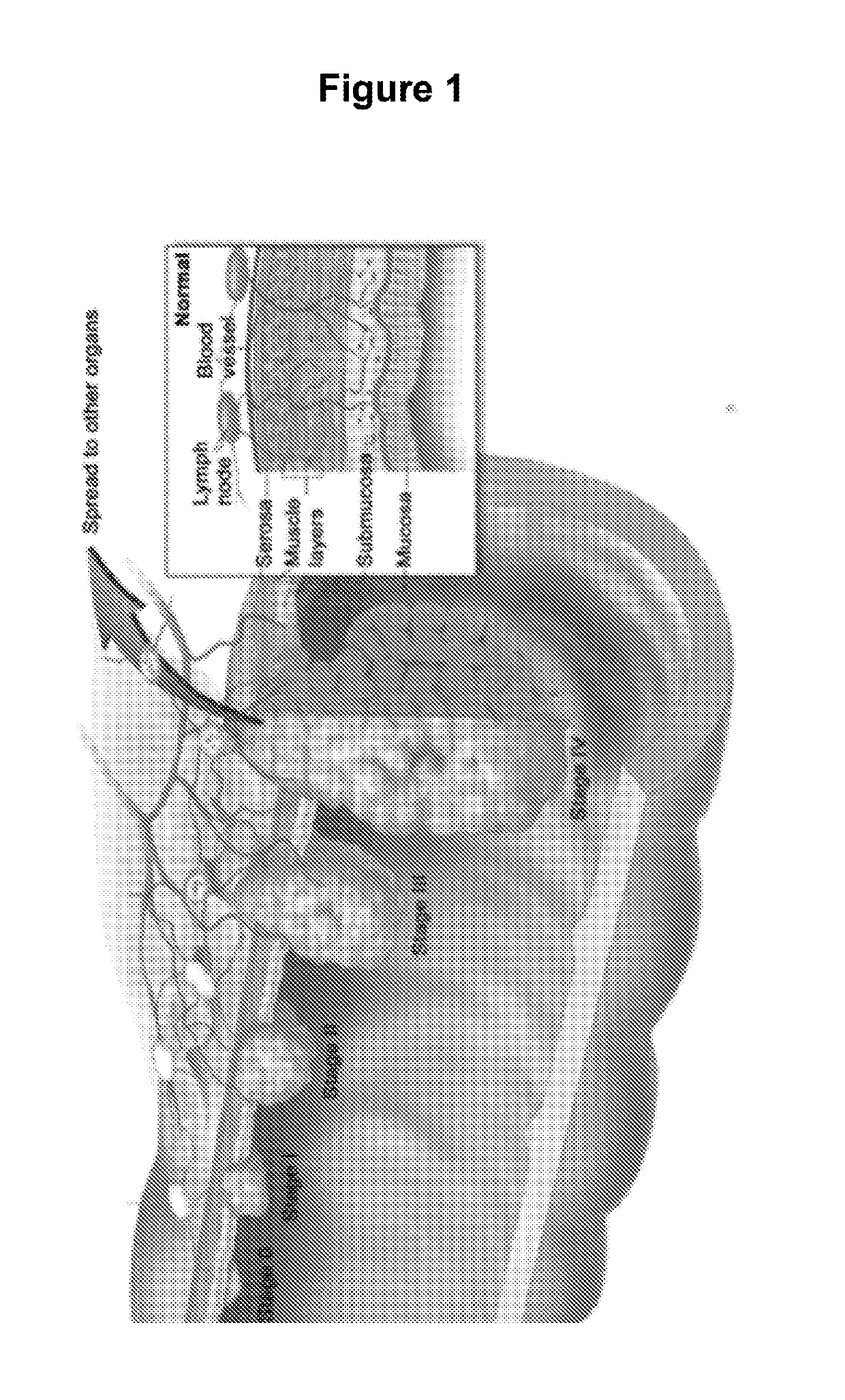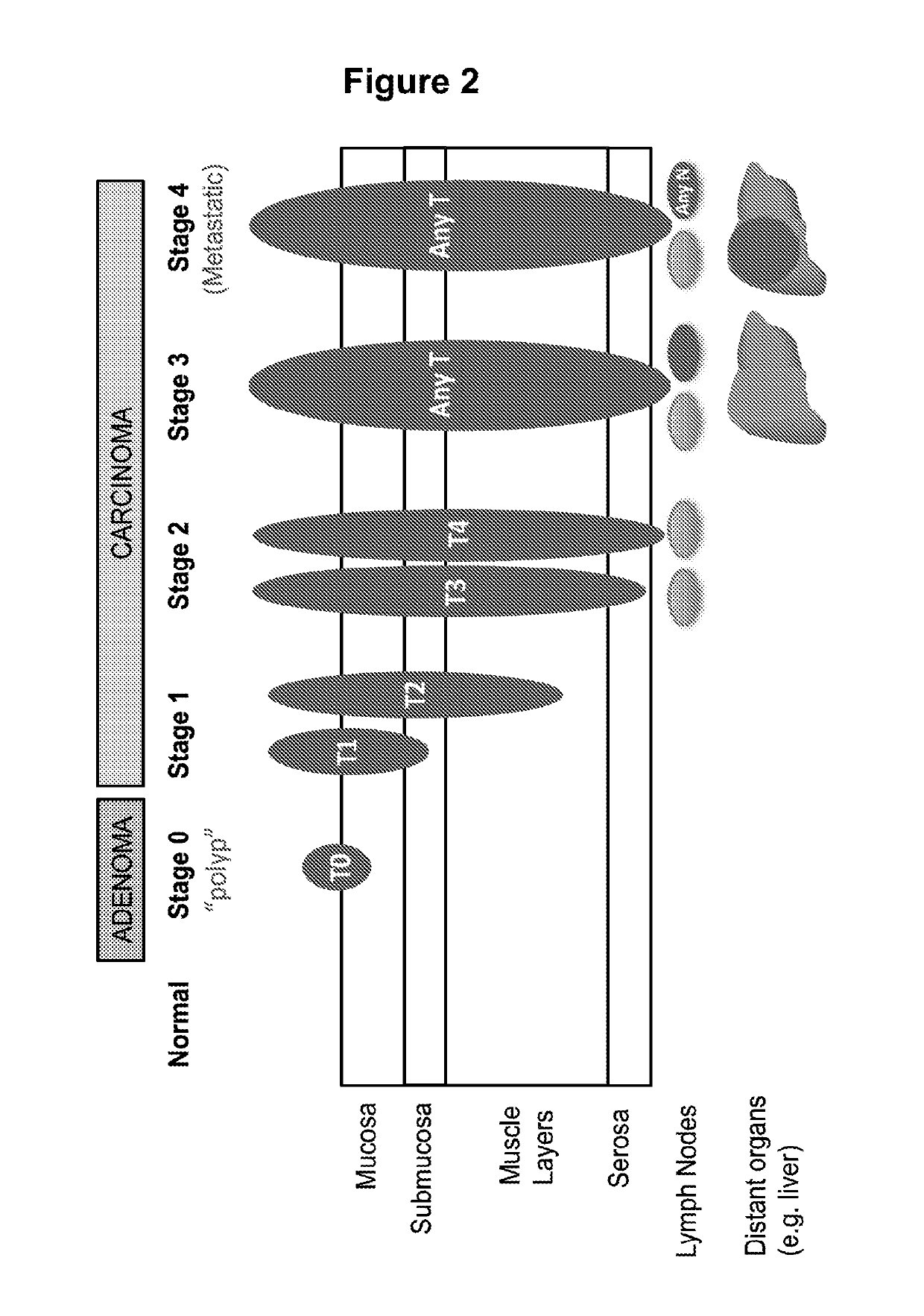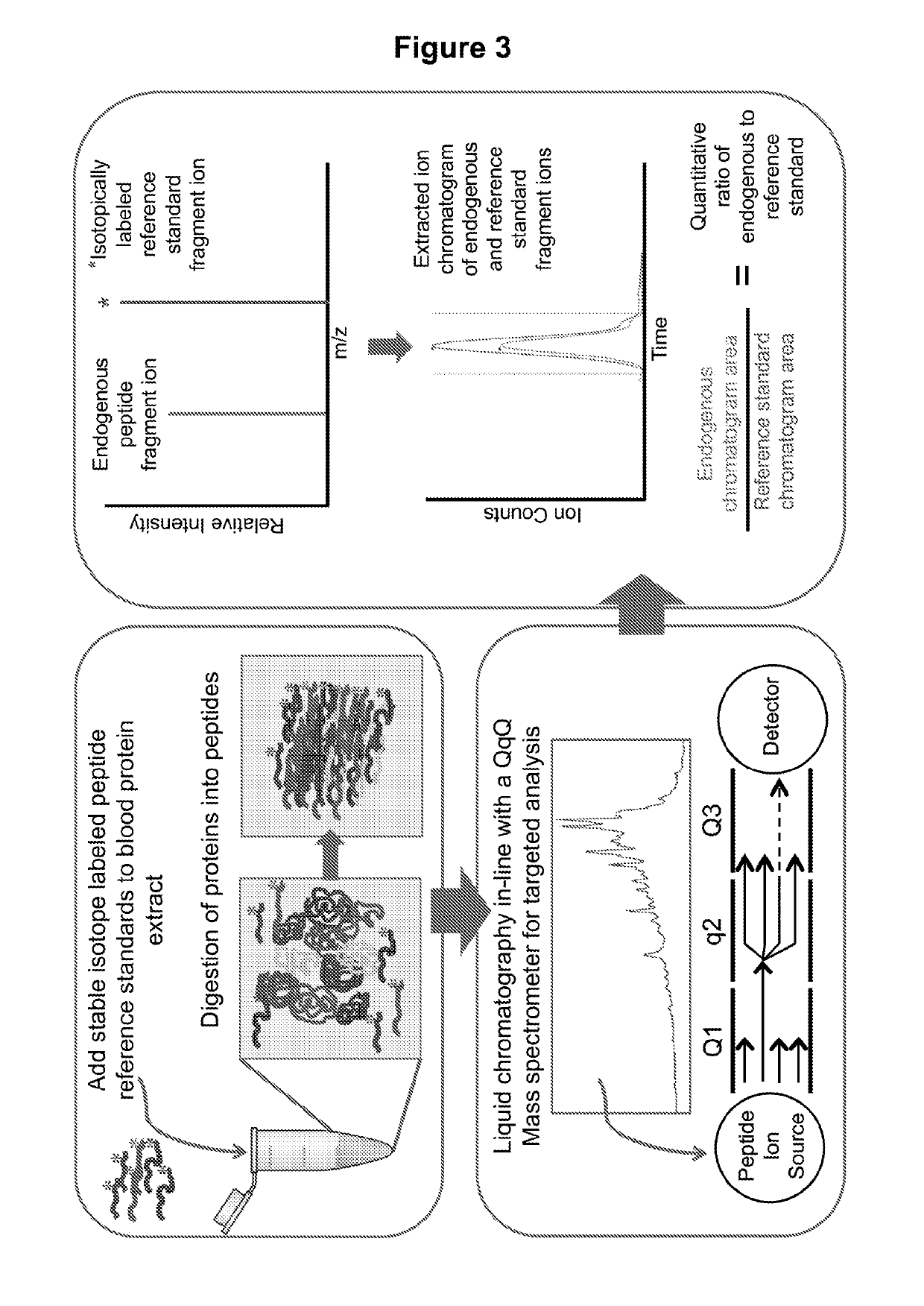Methods for Detection, Staging, and Surveillance of Colorectal Adenomas and Carcinomas
a colorectal adenomas and carcinoma technology, applied in the field of colorectal adenomas and carcinoma detection, staging and surveillance, can solve the problems of high survival rate, low adherence to the recommended screening guidelines, and repeated colonoscopy burden on the healthcare system, and achieve less benefit for patients than expected
- Summary
- Abstract
- Description
- Claims
- Application Information
AI Technical Summary
Benefits of technology
Problems solved by technology
Method used
Image
Examples
example 1
s have Diagnostic and Prognostic Utility for Detection of Colorectal Cancers and Precancerous Conditions
[0142]Blood serum was collected and analyzed for over 260 patient cases from colonoscopy, colectomy, or CT colonography / colonoscopy procedures (FIG. 5). Most colonoscopy cases were categorized into the low-risk group having either no polyps (normal tissue, n=56) or low-risk polyps (n=87). A total of 71 patients had polyps considered advanced adenomas that are high-risk for developing colorectal cancer. Out of 50 colectomy cases, 47 of the patients had non-metastatic cancer. Almost half of the cases were classified as stage 1 (n=22) while the rest were divided among stage 2 (n=13), and stage 3 (n=12) colorectal cancers. A total of 25 pre- and post-polypectomy pairs were collected from patients whose polyps were biopsied by colonoscopy after CT colonography. Eight patients did not return for a post-polypectomy blood collection. In this longitudinally monitored group, 11 low-risk, 22...
PUM
 Login to View More
Login to View More Abstract
Description
Claims
Application Information
 Login to View More
Login to View More - R&D
- Intellectual Property
- Life Sciences
- Materials
- Tech Scout
- Unparalleled Data Quality
- Higher Quality Content
- 60% Fewer Hallucinations
Browse by: Latest US Patents, China's latest patents, Technical Efficacy Thesaurus, Application Domain, Technology Topic, Popular Technical Reports.
© 2025 PatSnap. All rights reserved.Legal|Privacy policy|Modern Slavery Act Transparency Statement|Sitemap|About US| Contact US: help@patsnap.com



